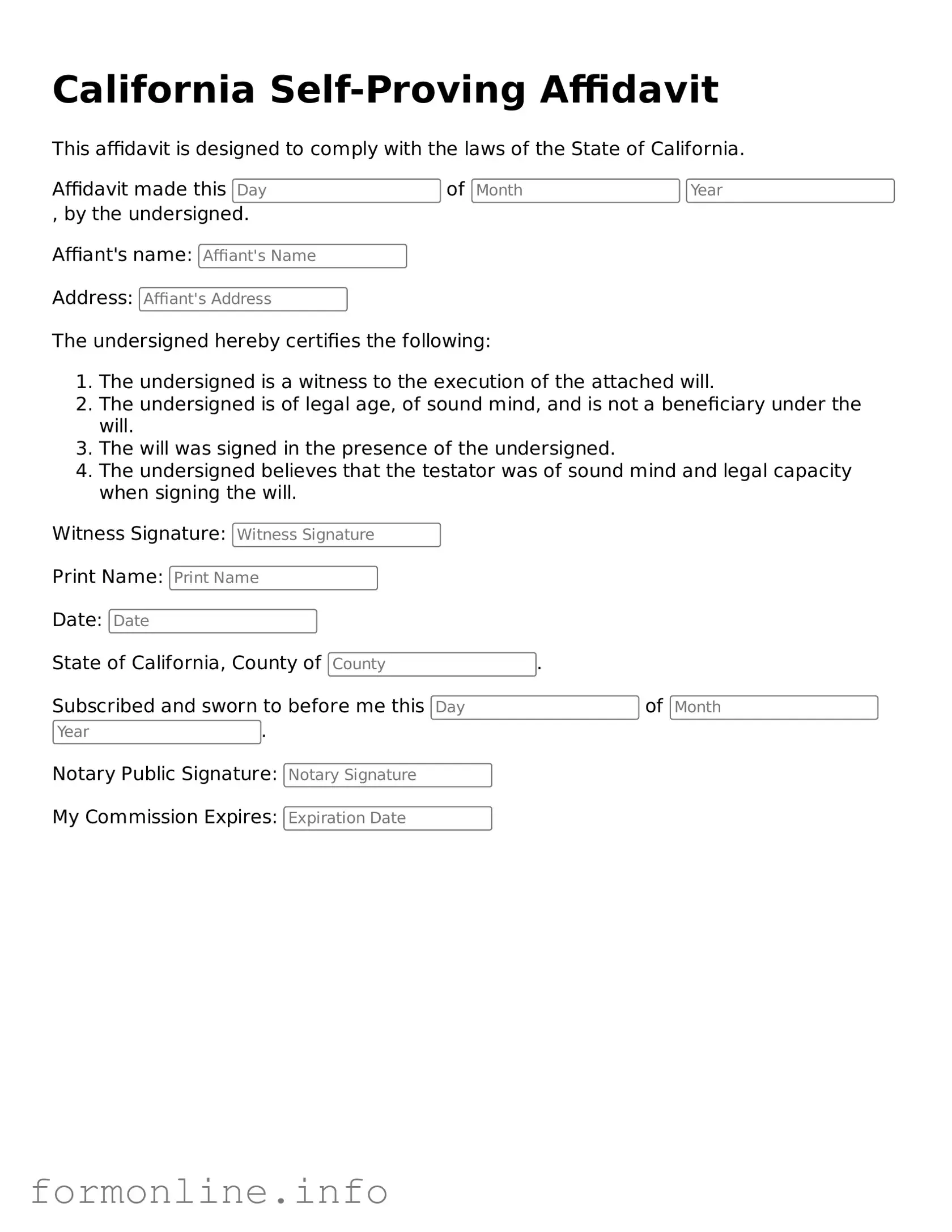Free Self-Proving Affidavit Template for California State
The California Self-Proving Affidavit form is a legal document that allows a testator’s will to be validated without the need for witnesses to testify in court. This form simplifies the probate process by providing a sworn statement from the witnesses affirming the testator's signature and mental capacity. For those looking to streamline their estate planning, filling out this form is a crucial step; click the button below to get started.
Prepare Form Online
